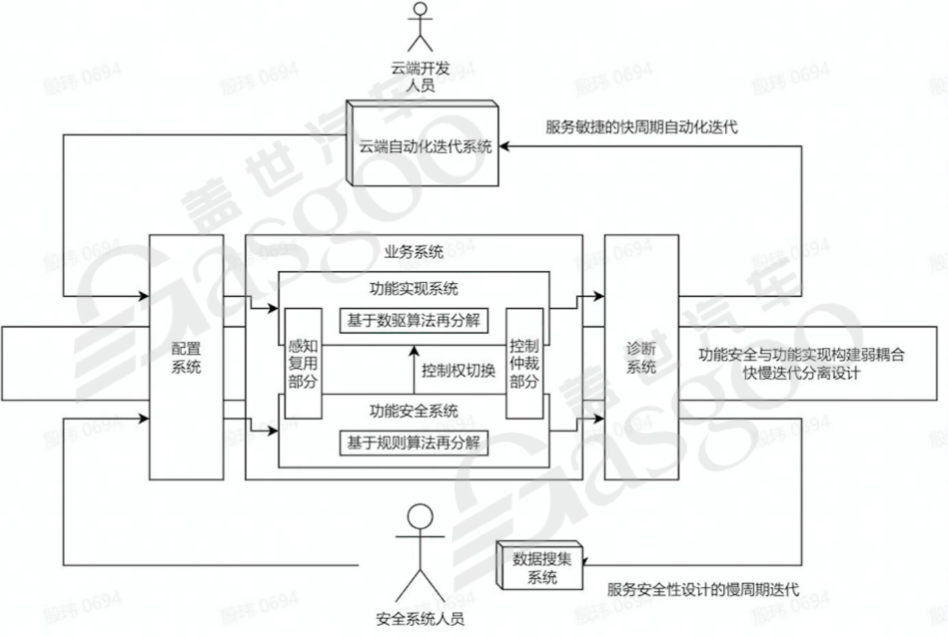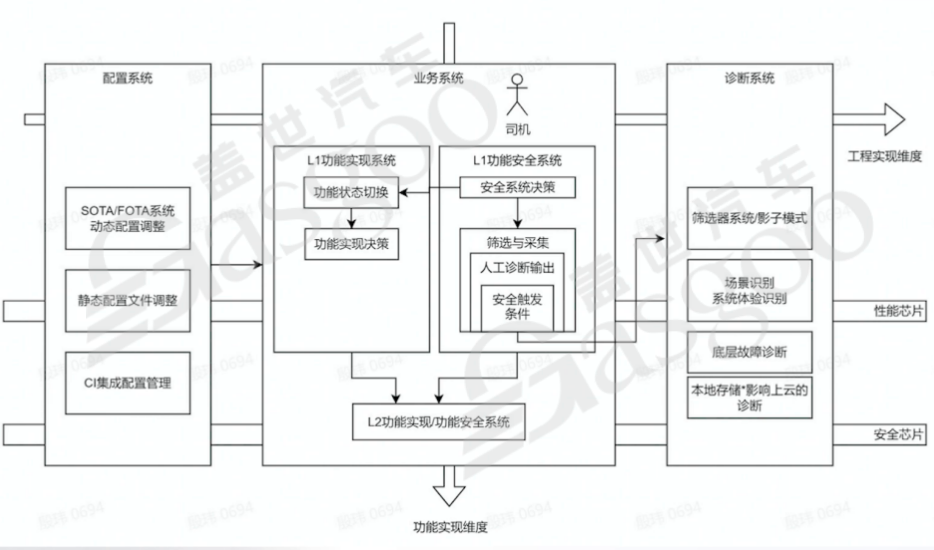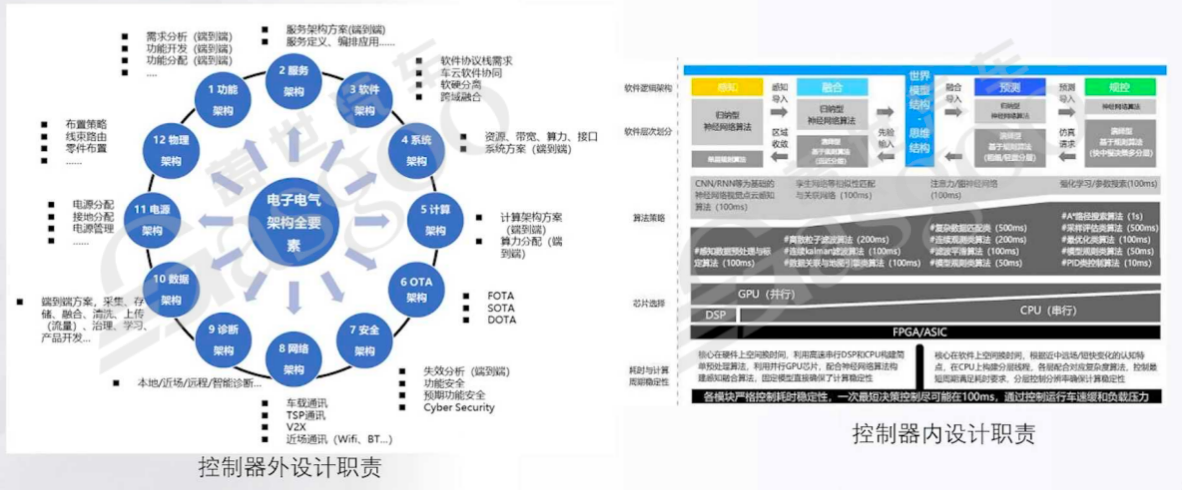The core thought behind system architecture design is about decomposition and balance. Mobileye adopts a decoupled approach with two independent systems: a pure vision system for rapid iteration and a LiDAR and radar system for boundary control, both of which are designed for functional safety. In contrast, common industry practices couple multiple sensors into a single system, requiring safety design for the entire system to meet the ASIL-D safety level. Mobileye's architecture exemplifies this independent system design philosophy. In practice, while the vision system often uses LiDAR data as supplementary data, most architectural designs lean towards integrating all components into a single module. The comparison between Mobileye and conventional industry designs reflects a unique thought process in architecture design, focusing on deep design logic rather than superficial differences. The tendency in design is to follow the principle of 'maximizing utility,' integrating all resources. However, Mobileye's design philosophy prioritizes exploring potential parts to reduce costs, such as using a pure vision system that offers better potential in terms of component quality, post-control, and cost control. From a first principles perspective, the feasibility of implementing a pure vision system represents the future direction of system development. At the same time, LiDAR and radar systems can serve as a backup to meet short-term mass production and delivery needs. This decomposition of the system into different functional modules is not an isolated case, as it is reflected across various dimensions such as communication, functional levels, and MCU/MPU levels. Recognizing the importance of this differentiation in architecture design leads to a different logic of design; failing to understand this can result in a dilemma between safety and user experience. In system design, balancing the demands of safety and experience often requires trade-offs. For instance, a system must be both safe and reliable while also providing a good user experience, which are typically concentrated on a single system. However, Mobileye's design logic deeply considers this balance during implementation, showcasing a commendable design philosophy.
Core Ideas in System Architecture Design: Decomposition and Balance

Images



Share this post on: